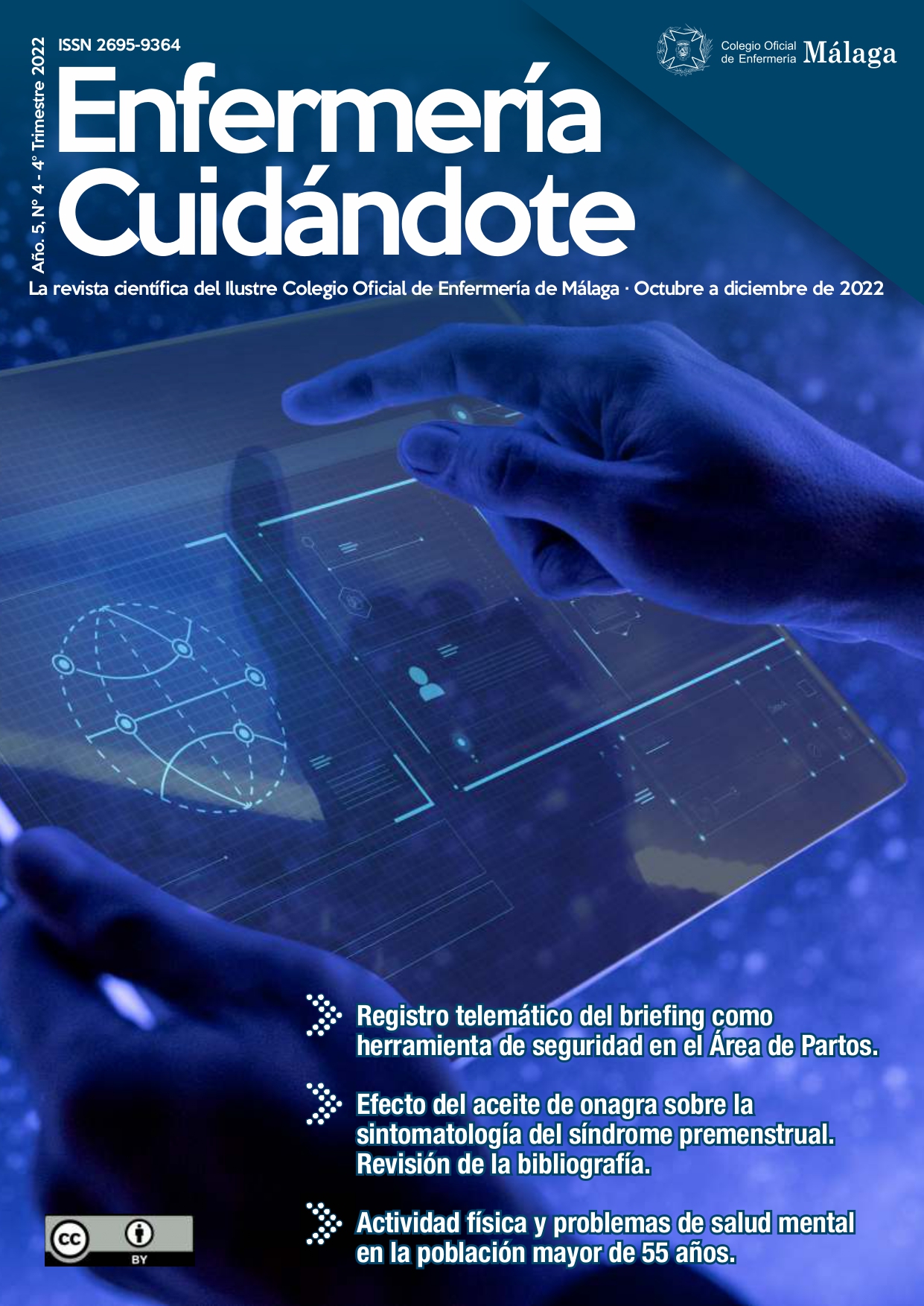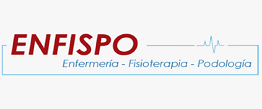Registro telemático del briefing como herramienta de seguridad en el Área de Partos
DOI:
https://doi.org/10.51326/ec.5.4.2543509Palabras clave:
Briefing, Código QR, Salas de Parto, Seguridad del Paciente, Uso de las TIC en Sistemas y Servicios de SaludResumen
Introducción:
En el ámbito de la salud, la comunicación efectiva ayuda a evitar malos resultados, especialmente cuando todos los proveedores de cuidados del paciente forman un equipo multidisciplinar y han de coordinar sus actuaciones de manera precisa. En el área de paritorios, los errores no son esperados y en la mayoría de los casos se presuponen que son prevenibles.
Objetivo: El objetivo de este trabajo ha consistido en el diseño e implantación de una herramienta telemática que registra los datos de cada briefing para identificar alertas de seguridad a partir de la información recogida.
Material y Método: Doble Diseño: Estudio observacional descriptivo y revisión bibliográfica de estudios publicados en diferentes bases de datos electrónicas en inglés y español centrados en la conceptualización de cultura de seguridad clínica y en sus fundamentaciones teóricas.
Resultados: Se observó un alto nivel de acuerdo sobre las metas del día y una elevada participación entre los distintos profesionales. Entre los problemas de comunicación hubo una fuerte predominancia respecto a la presencia de barreras idiomáticas con las pacientes. La disponibilidad del personal fue suficientemente adecuada a la carga de trabajo, mucho menos los recursos disponibles.
Conclusiones: Las sesiones de briefing registradas mediante código QR como estrategia sistemática para disminuir los eventos adversos obstétricos pueden tener un impacto significativo en la seguridad del paciente.
Descargas
Citas
Pettker CM, Thung SF, Norwitz ER, Buhimschi es, Raab CA, Copel JA, et al. lmpact of a comprehensive patient safety strategy on obstetric adverse events. Am J Obstet Gynecol. 2009;200(5): 492.e8. https://doi.org/10.1016/j.ajog.2009.01.022
Pettker CM, Grobman WA. Obstetric Safety and Quality. Obstet Gynecol. 2015; 126(1):196-206. https://doi.org/10.1097/aog.0000000000000918
Sabol B, Caughey AB. Quality Improvement and Patient Safety on Labor and Delivery. Obstet Gynecol Clin North Am. 2017;44(4):667-678. https://doi.org/10.1016/j.ogc.2017.08.002
Chang C, Perlman J. Anticipation and preparation for delivery room emergencies. Semin Fetal Neonatal Med. 2019;24(6):101031. https://doi.org/10.1016/j.siny.2019.101031
McComb SA, Lemaster M, Henneman EA, Hinchey KT. An Evaluation of Shared Mental Models and Mutual Trust on General Medical Units: Implications for Collaboration, Teamwork, and Patient Safety. J Patient Saf. 2017;13(4):237-242. https://doi.org/10.1097/pts.0000000000000151
Institute of Medicine (US) Committee on Quality of Health Care in America. To Err is Human: Building a Safer Health System. Kohn LT, Corrigan JM, Donaldson MS, editors. Washington (DC): National Academies Press (US); 2000. https://doi.org/10.17226/9728
Hart WM, Doerr P, Qian Y, McNaull PM. What Constitutes Effective Team Communication After an Error? AMA J Ethics. 2020;22(4): E298-304. https://doi.org/10.1001/amajethics.2020.298
Mehlhaff KM, Pettker CM. Establishing and Maintaining a Quality and Safety Program on Labor and Delivery. Clin Obstet Gynecol. 2019;62(3):572-579. https://doi.org/10.1097/grf.0000000000000468
Pettker CM, Grobman WA. Obstetric Safety and Quality. Obstet Gynecol. 2015;126(1):196-206. https://doi.org/10.1097/aog.0000000000000918
Etherington C, Wu M, Cheng-Boivin O, Larrigan S, Boet S. Interprofessional communication in the operating room: a narrative review to advance research and practice. Can J Anaesth. 2019;66(10):1251-1260. https://doi.org/10.1007/s12630-019-01413-9
The Joint Commission Sentinel Event Alert: Preventing infant death and injury during delivery. Issue 30, July 21, 2004. Disponible en:
https://www.jointcommission.org/resources/patient-safety-topics/sentinel-event/sentinel-event-alert-newsletters/sentinel-event-alert-issue-30-preventing-infant-death-and-injury-during-delivery/ [Consultado 01/06/2022]
McQuaid-Hanson E, Pian-Smith MC. Huddles and Debriefings: Improving Communication on Labor and Delivery. Anesthesiol Clin. 2017;35(1):59-67. https://doi.org/10.1016/j.anclin.2016.09.006
Harris PA, Taylor R, Minor BL, Elliott V, Fernandez M,..., REDCap Consortium. The REDCap consortium: Building an international community of software platform partners. J Biomed Inform. 2019; 95:103208. https://doi.org/10.1016/j.jbi.2019.103208
Rodziewicz TL, Houseman B, Hipskind JE. Medical Error Reduction and Prevention. 2021. In: StatPearls. Treasure Island (FL): StatPearls Publishing; 2021. Disponible en: https://www.ncbi.nlm.nih.gov/books/NBK499956/
Weller J, Boyd M, Cumin D. Teams, tribes and patient safety: overcoming barriers to effective teamwork in healthcare. Postgrad Med J. 2014 Mar;90(1061):149-54. http://dx.doi.org/10.1136/postgradmedj-2012-131168
Rönnerhag M, Severinsson E, Haruna M, Berggren I. A qualitative evaluation of healthcare professionals' perceptions of adverse events focusing on communication and teamwork in maternity care. J Adv Nurs. 2019 Mar;75(3):585-593. https://doi.org/10.1111/jan.13864
Yip L, Farmer B. High Reliability Organizations—Medication Safety. J Med Toxicol. 2015; 11, 257–261. https://doi.org/10.1007/s13181-015-0471-2
Sundar E, Sundar S, Pawlowski J, Blum R, Feinstein D, Pratt S. Crew Resource Management and Team Training. Anaesthesiol Clin. 2007;25(2):283-300. https://doi.org/10.1016/j.anclin.2007.03.011
Salik I, Paige JT. Debriefing the Interprofessional Team in Medical Simulation. 2020 May 5. In: StatPearls. Treasure Island (FL): StatPearls Publishing; 2021. Disponible en: https://www.ncbi.nlm.nih.gov/books/NBK554526/
Reszel J, Weiss D, Sprague AE, Fell DB, Dunn S, Walker MC, Sidney D, Taljaard M, Peterson WE. A mixed-methods evaluation of the MOREOB program in Ontario hospitals: participant knowledge, organizational culture, and experiences. BMC Health Serv Res. 2019 Jul 8;19(1):460. https://doi.org/10.1186/s12913-019-4224-9
Buljac-Samardzic M, Doekhie KD, van Wijngaarden JDH. Interventions to improve team effectiveness within health care: a systematic review of the past decade. Hum Resour Health. 2020;18(1):2. https://doi.org/10.1186/s12960-019-0411-3
Menon S, Singh H, Giardina TD, Rayburn WL, Davis BP, Russo EM, Sittig DF. Safety huddles to proactively identify and address electronic health record safety. J Am Med Inform Assoc. 2017 Mar 1;24(2):261-267. https://doi.org/10.1093/jamia/ocw153
Maestre JM, Rudolph JW. Theories and styles of debriefing: the good judgment method as a tool for formative assessment in healthcare. Rev Esp Cardiol (Engl Ed). 2015 Apr;68(4):282-5. https://doi.org/10.1016/j.rec.2014.05.018
Gonzalez-Argote Javier, Garcia-Rivero Alexis Alejandro. QR codes and their uses in health sciences. Rev. cuba. inf. cienc. salud. 2016 Jun; 27( 2 ): 239-248. Disponible en: https://pesquisa.bvsalud.org/portal/resource/es/lil-781965




















